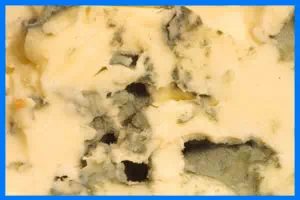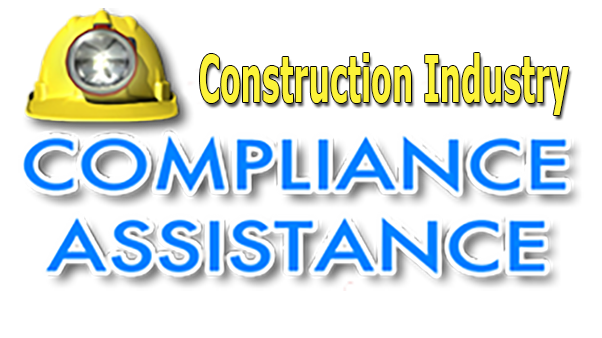
Asbestos
Overview
|
|
 |
Asbestos is used in certain products where heat and corrosion resistance is important, such as building materials and vehicle brakes. For building materials, asbestos is most often found in products such as shingles, floor tiles, cement pipe and sheet, roofing felts, insulation, ceiling tiles, fire-resistant drywall, and acoustical products. You are particularly likely to find asbestos in older materials in existing buildings.
Asbestos is known to be a health hazard. If inhaled, it accumulates in the lungs, creating scar tissue that makes it more difficult to breathe, and leading to a type of lung cancer called mesothelioma, which is almost always fatal by the time it is diagnosed. Therefore, asbestos is extensively regulated. For the construction industry, there are two primary concerns, each having its own set of rules:
- EPA (U.S. Environmental Protection Agency) established rules under the authority of the Clean Air Act (CAA) to protect the general public from the release of airborne asbestos fibers during the demolition or renovation of buildings. These rules are referred to as the Asbestos NESHAP (National Emissions Standards for Hazardous Air Pollutants). They cover work practices to be followed during demolition and renovation and other activities involving the processing, handling, and disposal of asbestos-containing material.
- EPA established asbestos regulations under the Toxics Substance Control Act (TSCA) in part to prevent or eliminate unreasonable risks to health or the environment associated with chemical substances or mixtures. While much of subchapter II of the TSCA statute focuses on asbestos in local education agencies (LEAs), there is one program that is applicable to public and commercial building renovations and demolitions. The Model Accreditation Plan (MAP) requires workers associated with an asbestos renovation or demolition operation at a public or commercial building must be properly trained and accredited for the work they do on-site.
- OSHA (Occupational Safety and Health Agency) and EPA established rules to protect the health of workers that are most likely to contact asbestos. These rules established strict worker exposure limits and set out requirements for employers regarding exposure assessment, medical surveillance, recordkeeping, and hazard communication. The EPA rules cover state and local government employees and the OSHA rules cover private sector workers.
The information presented below pertains only to federal regulations. Please note that state (and sometimes local) asbestos regulations are often more stringent and far reaching than the federal regulations. Therefore, you should also use the CICA Asbestos State Regulation Locator to learn about the rules in your state.
| Asbestos Hotline. EPA Asbestos and Small Business Ombudsman (ASBO) staff provide general assistance regarding asbestos issues. |
Asbestos NESHAP Resources
Asbestos National Emission Standards for Hazardous Air Pollutants (NESHAP)
The asbestos NESHAP regulations specify work practices for asbestos to be followed during demolitions and renovations of all structures, installations, and buildings (excluding residential buildings that have four or fewer dwelling units). The regulations require the owner of the building or the operator to notify the appropriate state agency before any demolition, or before any renovations of buildings that could contain a certain threshold amount of asbestos or asbestos-containing material. In addition, particular manufacturing and fabricating operations either cannot emit visible emissions into the outside air or must follow air cleaning procedures, as well as follow certain requirements when removing asbestos-containing waste.
-
40 CFR Part 61, Subpart M (complete text)
EPA's Asbestos Small Business Ombudsman. (ASBO) serves as a conduit for small businesses to access EPA. The ASBO advocates for small business issues, partners with state Small Business Environmental Assistance Programs (SBEAPs), EPA Regional Small Business Liaisons (RSBLs), small business trade associations, EPA headquarters and regional offices, the Small Business Administration (SBA) and other federal agencies to reach out to the small business community.
Demolition Practices Under the Asbestos NESHAP. A plain language summary of the Asbestos NESHAP covering pre-demolition activities, demolition practices by type of ACM and by method, waste handling, and disposal practices.
Common Questions on the Asbestos NESHAP
Many of the questions included on this web page have been raised by demolition and renovation contractors in recent years. Most questions relate to how a demolition or renovation contractor or building owner can best comply with the regulation. The responses assume that the questioner has a basic understanding of the Asbestos NESHAP and demolition and renovation practices.
Asbestos NESHAP Adequately Wet Guidance
The purpose of this web page is to provide guidance to asbestos inspectors and the regulated community on how to determine if friable ACM is adequately wet, as required by the Asbestos NESHAP.
Field Guide: Reporting and Record Keeping Requirements for Waste Disposal
This is a web page designed to help you comply with the new reporting and record keeping requirements of the asbestos National Emission Standards for Hazardous Air Pollutants (NESHAP). The specific responsibilities of waste generators, transporters and waste disposal site operators are addressed, as well as detailed explanations of how to complete the new forms accurately and efficiently.
Information for Owners and Managers of Buildings that Contain Asbestos
This page provides information on federal requirements for the renovation and demolition of buildings that contain asbestos. It also provides guidance on developing and maintaining an operations and maintenance program to manage asbestos-containing materials in buildings. Public and non-profit private schools have distinct regulatory requirements for the management of asbestos.
Asbestos Worker Protection Resources
OSHA's
Asbestos Standard for the Construction Industry
A booklet published by OSHA that explains the provisions of the OSHA standards
(29 CFR 1926.1101) that pertain to the construction industry.
OSHA 10-Hour Construction Industry
Outreach-Trainer Presentations
These materials are designed to assist trainers conducting OSHA 10-hour Construction Industry outreach training for workers. Since workers are the target audience, these materials emphasize hazard identification, avoidance, and control - not standards. No attempt has been made to treat the ten topics exhaustively.
40 CFR 763 (Asbestos Worker Protection)
In this Final Rule, EPA amends both the Asbestos Worker Protection Rule (WPR) and the Asbestos-in-Schools Rule. The WPR amendment protects State and local government employees (construction work, custodial work, and automotive brake and clutch repair work) from the health risks of exposure to asbestos to the same extent as private sector workers by adopting for these employees the Asbestos Standards of the Occupational Safety and Health Administration (OSHA).
CICA Asbestos State Resource Locator
